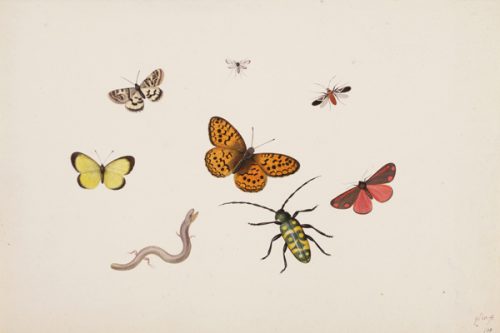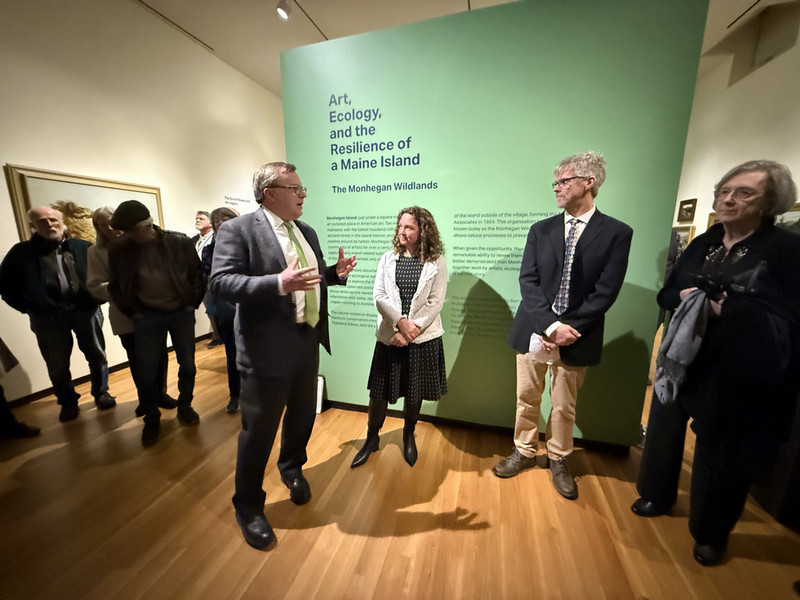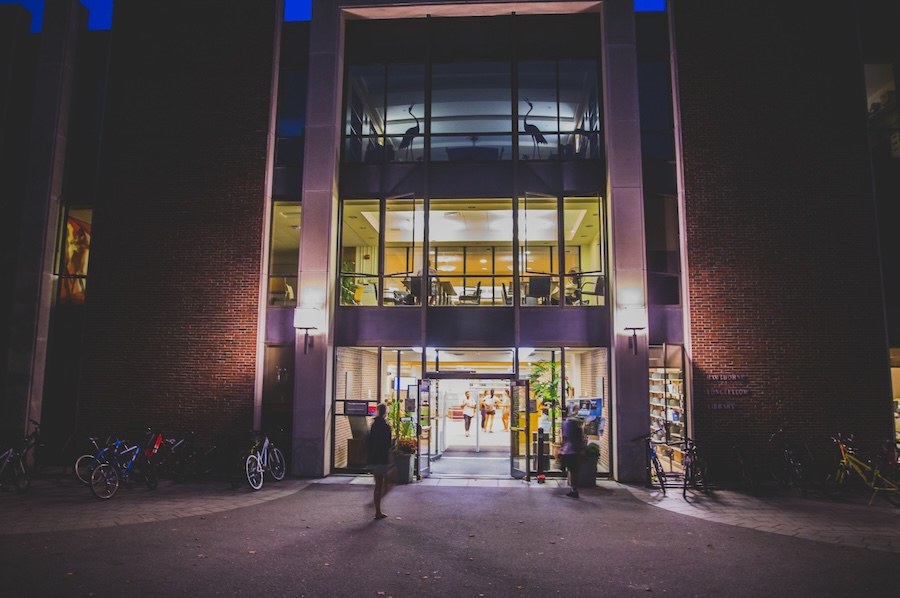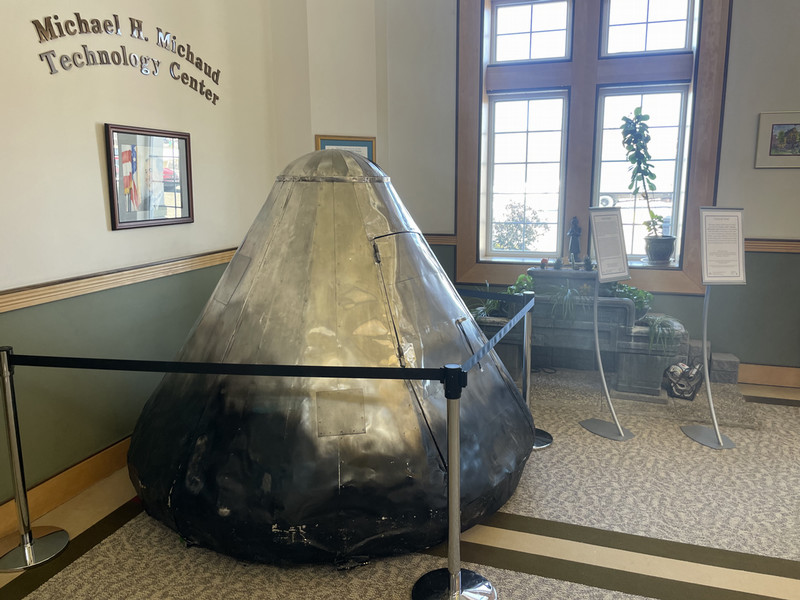Why draw? An acquisition adds a new dimension to the upcoming exhibition of drawings at the Museum of Art
By Bowdoin College Museum of Art
This summer the Museum acquired Studies of Butterflies, Moths, Flies, a Beetle, and a Slowworm by the Dutch artist Pieter Withoos (1655–1692). This richly detailed drawing in black chalk, ink, and watercolor is engaging because of the variety and beauty of the closely observed specimens, the harmonious composition, and the outstanding state of preservation of the comparatively large sheet. The work came on the market from the famed I. Q. van Regteren Altena Collection, compiled over almost sixty years by the former head of the Prints and Drawings Department of the Rijksmuseum in Amsterdam. We are happy to announce that the acquisition of this drawing was supported by a generous gift by George and Elaine Keyes of Waldoboro, Maine.
The Museum’s distinguished collection of drawings spans five centuries and was founded by James Bowdoin III through his bequest of 141 works on paper. One of the most consistent areas of collecting in the field of drawings since then has been the acquisition of Dutch works. While the Museum has acquired many valuable examples of biblical and mythological scenes and landscapes, other aspects of Dutch drawing practice of the “Golden Age,” the seventeenth century, are noticeably absent. This work is the first Dutch drawing (and the first Old Master drawing) to record natural specimens with a scientific interest. It is also the first Dutch drawing in full color to enter the collection. The drawing will be included in the upcoming exhibition Why Draw?, on view next summer, and will serve as an important example of the scientific use of drawing during this period.
It is important to note that Pieter Withoos belonged to a group of artists who were commissioned by Agneta Block (Dutch, 1629–1704) to paint album leaves with plants, insects, and birds. While it is not clear whether this work was part of the commission, it represents the type of work that Withoos created for the famous horticulturalist and art collector who maintained a garden with exotic plants at her country estate Vijverhof in Loenen. Vijverhof is now the seat of the Netherlands Institute for Ecology and Agneta Block’s role in the fostering of art and natural science is well researched.
This exhibition Why Draw? surveys the Museum’s distinguished collections of drawings and features rarely seen works by artists from Carlo Maratti and Peter Paul Rubens to Winslow Homer, Ed Ruscha, Eva Hesse, and Natalie Frank.
To those not yet familiar with the history of drawing in America and Europe, the exhibition offers a comprehensive introduction that highlights the creative process. The intimacy of drawing, which involves the movement of the hand across paper and the recognition of the marks by the artist’s eye, makes drawing an absorbing field of study for anyone interested in human imagination and creativity. About 130 exceptional works exemplify what compels artists to draw and illustrate the ongoing relevance of drawing as the most foundational artistic practice. Throughout the last 500 years, artists have found ingenious ways to capture their observations, visualize information, and work through pictorial ideas. They drew to learn, to teach, and to communicate with workshops, colleagues, and collectors.



